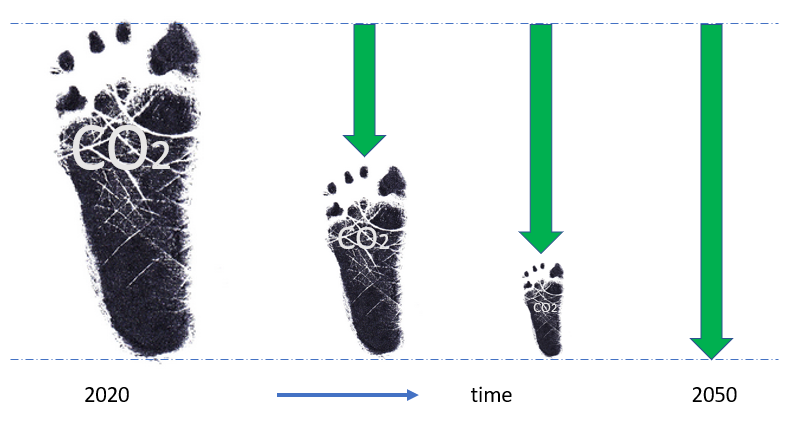Carbon footprint reduction is of increasing importance for energy intensive industries, power plants, offices, hospitals, nursing and residential homes.
in response to growing concerns about climate change both national and international energy policies now demand significant reductions in CO₂ emissions before 2050 (EU-target: CO2-neutral in 2050; in 2030 55% less CO2 emission than in 1990). It will be a huge task to achieve those goals.

Strategic Energy Transition for Energy-Intensive Industries
For energy intensive companies the transition to a low-carbon future is a major challenge. Achieving national and international climate goals, such as 55% CO₂ reduction by 2030 and climate neutrality by 2050, requires structural changes in production processes.
To contribute effectively, companies must begin rethinking their energy strategies with a focus on:
energy efficiency: Reduce energy consumption by 20–90%
reduction of fossil fuel use and related CO₂ emissions (target: ≥55%)
integration of renewable energy sources at the production site
electrification of processes, using carbon-free electricity
utilization of residual heat, supplying it to local or district heating networks
CerTa Veritas: Your Partner in Energy Transition
For many companies, such strategic energy studies are not part of daily operations. CerTa Veritas, with its deep roots in energy conversion and thermodynamic analysis, offers expert support in conducting these studies.
We deliver clear, substantiated reports that help organizations make well-informed decisions toward sustainability and carbon footprint reduction.
Our experience includes projects for:
greenhouse horticulture
food and animal feed industries
glass manufacturing
energy utilities (electricity and district heating)
municipalities and hospitals
A Structured Approach
The extent of the intended savings / reductions requires structural changes in the production processes. To achieve these ambitious goals an in-depth energy analysis and exploration study of alternative energy concepts must be made, comprising amongst others the following steps:
analysis of core processes and their energy consumption
assessment of energy losses and recovery potential
improvement of current heat and mechanical energy systems
opportunities for sustainable energy integration (solar, wind, biomass, geothermal)
development of alternative energy scenarios
energetic impact assessment (primary energy use, CO₂ emissions, renewable share)
financial impact assessment (energy cost, taxes, subsidies)
investment estimation and profitability analysis
scenario evaluation considering future energy price trends, risks, and feasibility
